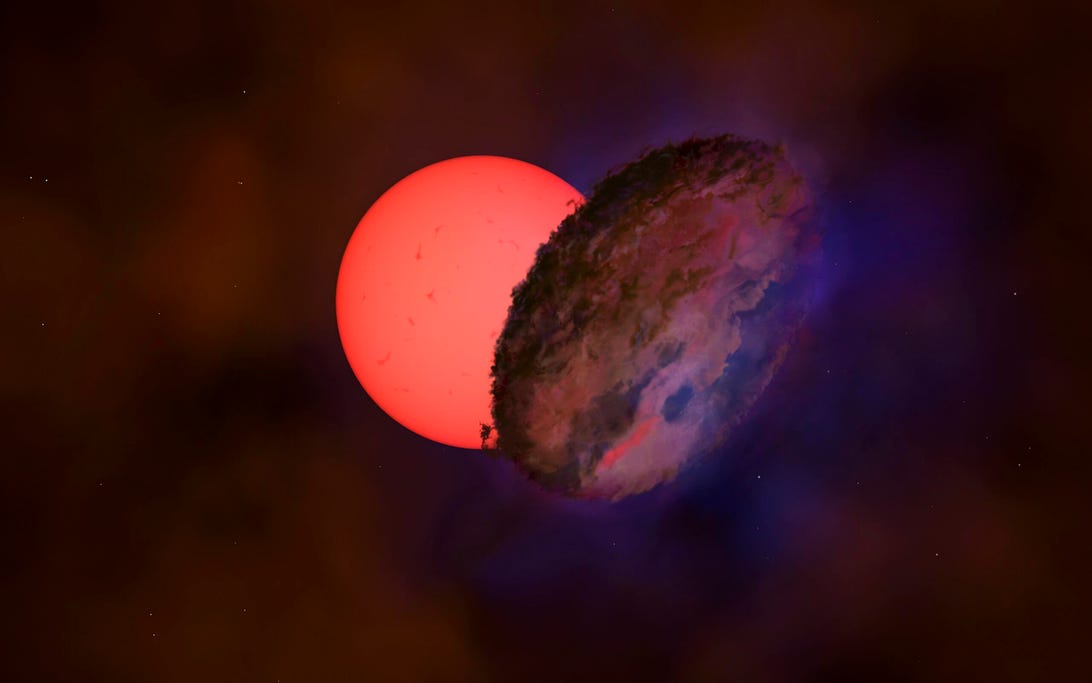
Something passed in front of a star in a distant part of the Milky Way -- but astronomers aren't sure what.
Amanda Smith/University of CambridgeIn 2012, a giant star some 25,000 light-years away blinked at the Earth, and we stared back, a little confused.
Astronomers using the VISTA telescope in Chile watched the star dramatically decrease in brightness and then light up again over a period of around 200 days. The team has a hunch that a large object, orbiting the giant star, obscured our view of it briefly -- but the nature of the occulting object is uncertain. They've dubbed the event VVV-WIT-08.
"It's amazing that we just observed a dark, large and elongated object pass between us and the distant star and we can only speculate what its origin is," said Sergey Koposov, an astronomer at the University of Edinburgh and co-author of the new study.
The study, published in the journal Monthly Notices of the Royal Astronomical Society, suggests a couple of possibilities, but the dip doesn't appear to be due to features inherent to the star itself -- it must be a gravitationally bound companion.
The event was discovered in the VISTA Variables in the Via Lactea survey (VVV). The WIT acronym that stands for "What is this?" and is used when astronomers aren't clear on why these giant stars might be blinking.
An animation of the mysterious object that passed in front of VVV-WIT-08?
Leigh Smith, Sergey KoposovA number of WIT objects have been discovered before, with a handful of explanations: violent quasars, star collisions and novas. The team state this one is almost certainly an occultation event -- something has passed in front of the star from our view in the universe -- and it must be faint, with a thickness greater than 23 million miles (or about one-quarter of the distance between the Earth and the sun).
They considered a number of different objects, ruling out a chance object wandering the cosmos just passing in front of the star. It's also unlikely huge discs of debris around white dwarfs and neutron stars caused the occultation, though the team say that a cloud of dusty, messy gas and debris around a black hole -- a "black hole fallback disc" -- may be to blame.
The team have also identified two other candidate events, VVV-WIT-10 and VVV-WIT-11, suggesting there may be more of these "blinking giants" to discover and describe.
"There are certainly more to be found, but the challenge now is in figuring out what the hidden companions are, and how they came to be surrounded by discs, despite orbiting so far from the giant star," said Leigh Smith, an astronomer at Cambridge's Institute of Astronomy and first author of the study.
from CNET https://ift.tt/3iADVYF
via IFTTT



No comments:
Post a Comment